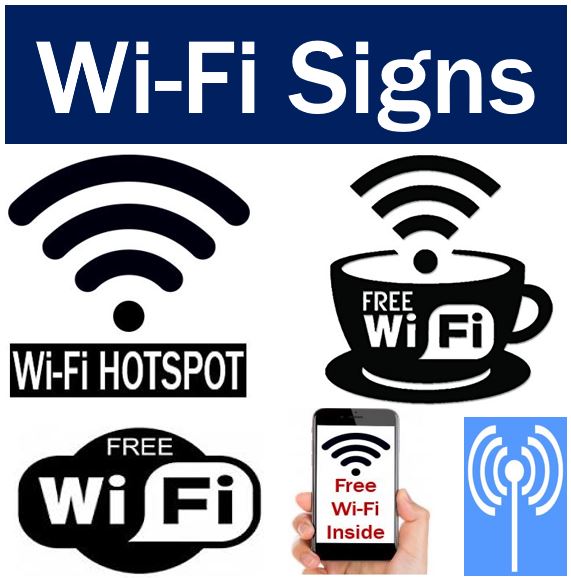Wi-Fi is a facility that allows computers, laptops, smartphones, tablets, printers and other devices to communicate with one another or connect to the Internet wirelessly within a specific geographical area.
Put simply, it is a way of getting Internet without the wires. It allows several devices in one area to be connected at once, without having to install extra telephone lines or cables. It is one of many different types of wireless technologies.
The term emerged in the 1990s from Wireless plus Fi, an apparently arbitrary second element, after Hi-Fi. People commonly mistakenly interpret it as a short form of Wireless Fidelity.
As a verb, it means to adapt or convert to Wi-Fi compatibility, as in: “Central London plans to be completely Wi-Fied by the end of the decade.”

It is a technology for wireless LAN (local area network) with devices based on the IEEE 802.11 standards.
What do Wi-Fi and microwaves have in common?
Wi-Fi allows devices to connect at data transfer rates between 11 and 11 Mb/sec (megabits per second), compared to standard Ethernet’s 10 Mb/sec maximum via cables.
Wi-Fi operates using the same frequency used by mobile telephones and microwave ovens over 11 channels – 2.4 GHz (Gigahertz).
Many cafes, restaurants, airports, train stations, buses, trains, public buildings, and airplanes today have Wi-Fi installed.
If you see a fellow passenger on an airplane surfing the Internet on a laptop or smartphone, they are likely using the aircraft’s Wi-Fi network, especially if you are flying high up in the air.

How does Wi-Fi function?
Wi-fi creates a network in an area – your home, office, commercial premises – a small zone where devices can obtain broadband Internet.
It uses radio waves just like televisions, microwaves and mobile phones do. We often refer to this zone as a Wireless Local Area Network (WLAN).
A wireless transmitter – which we also call a ‘hub’ – receives data from the Internet via, for example, your household’s broadband connection. This data is converted into a radio signal and is then emitted.
BBC WebWise writes:
“You could think of the transmitter as a mini radio station, broadcasting signals sent from the internet.”
“The ‘audience’ for these transmissions is the computer (or computers, as more than one can connect at the same time) which receives the radio signal via something called a wireless adapter.”
The whole process also works the other way round. Your device sends the data to the wireless transmitter, which converts it and sends it through your broadband connection.
All this happens incredibly rapidly. If you are having a voice-call or video-call conversation via WhatsApp or Skype with a friend on the other side of the world, you will not be aware of any delay in the transmission of data – your conversation proceeds smoothly and seamlessly, as if you were standing in front of each other.
Scientists at Eindhoven University of Technology in The Nertherlands have developed Wi-Fi that works on wavelengths of 1500 nanomeers and higher – i.e. infrared rays, which allow devices to communicate 100 times faster than our current system.
